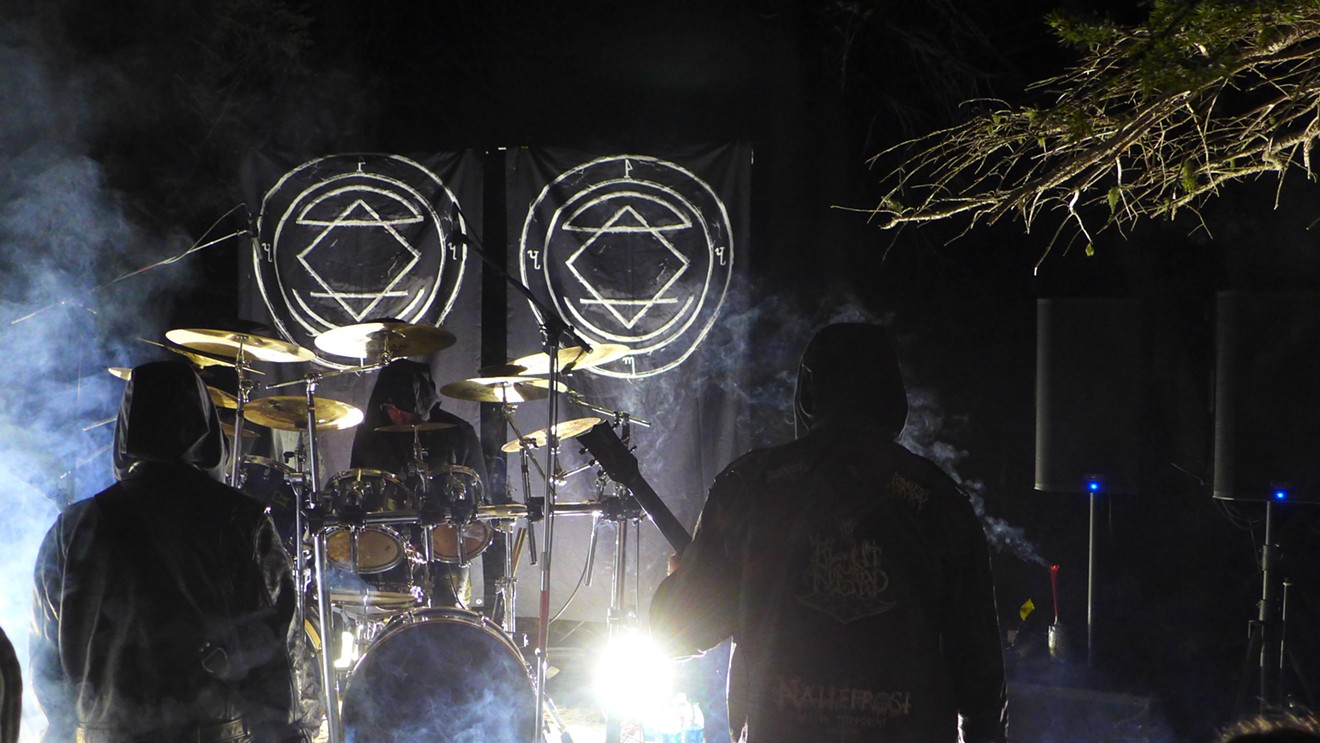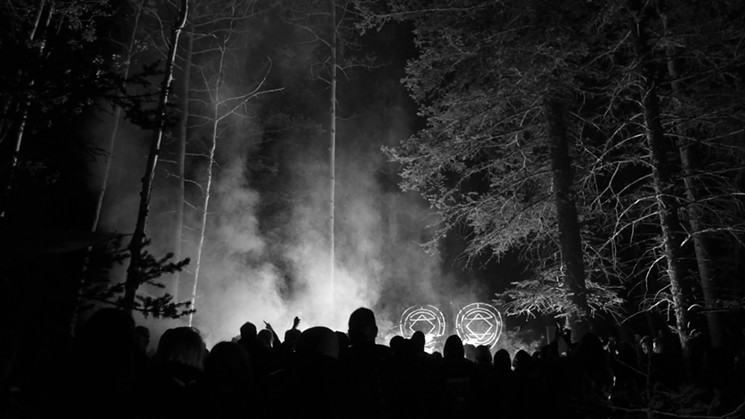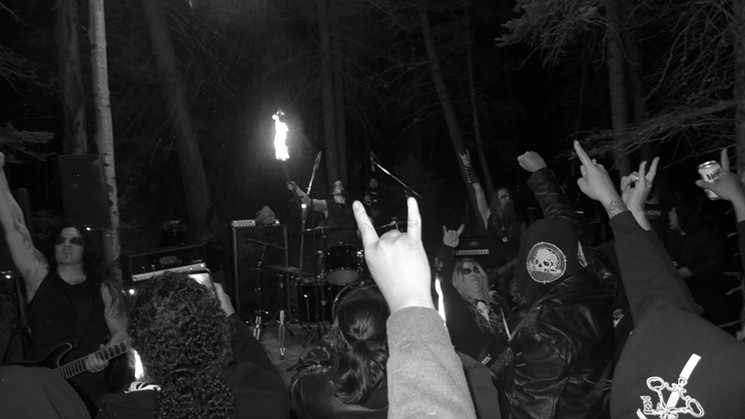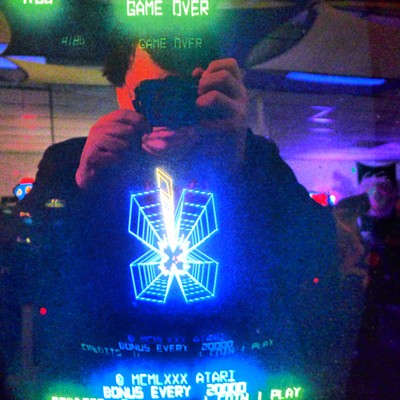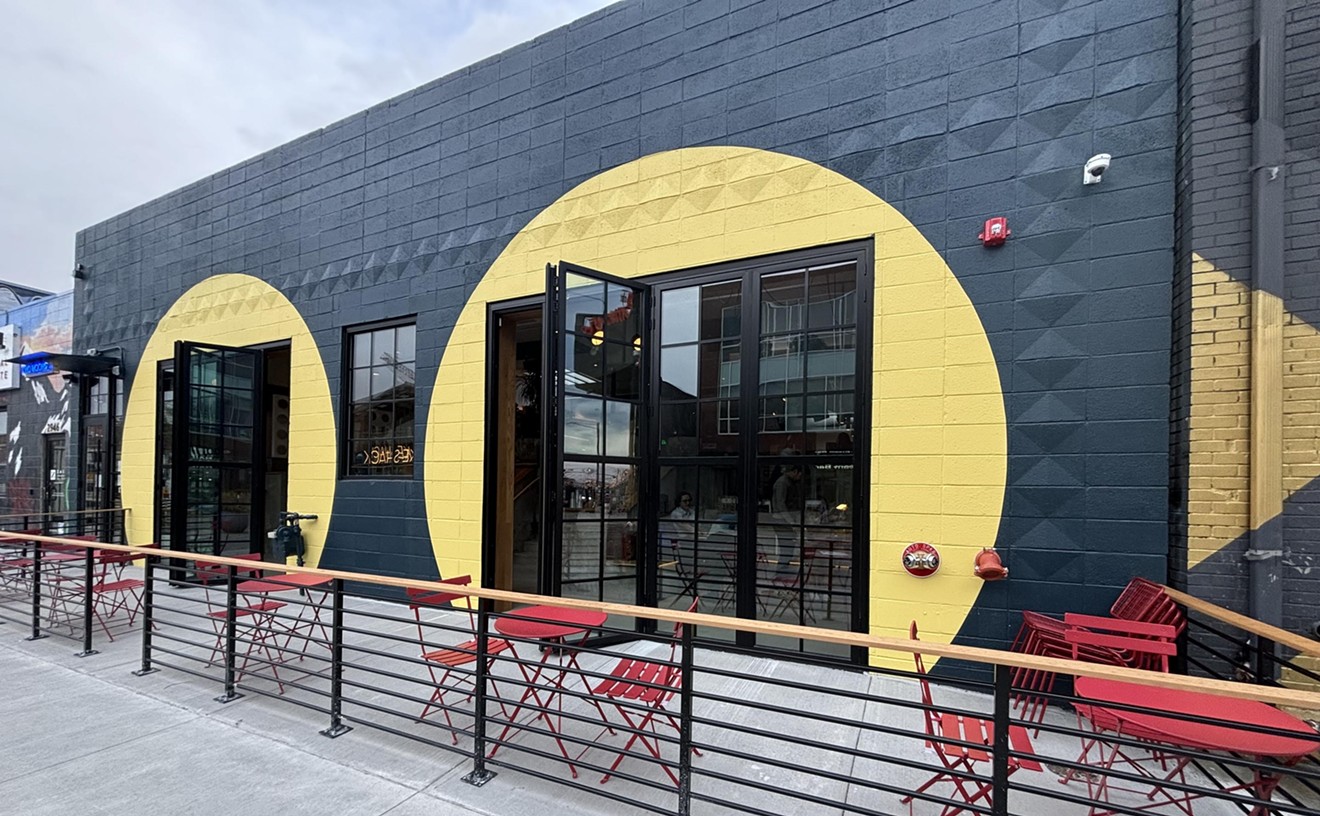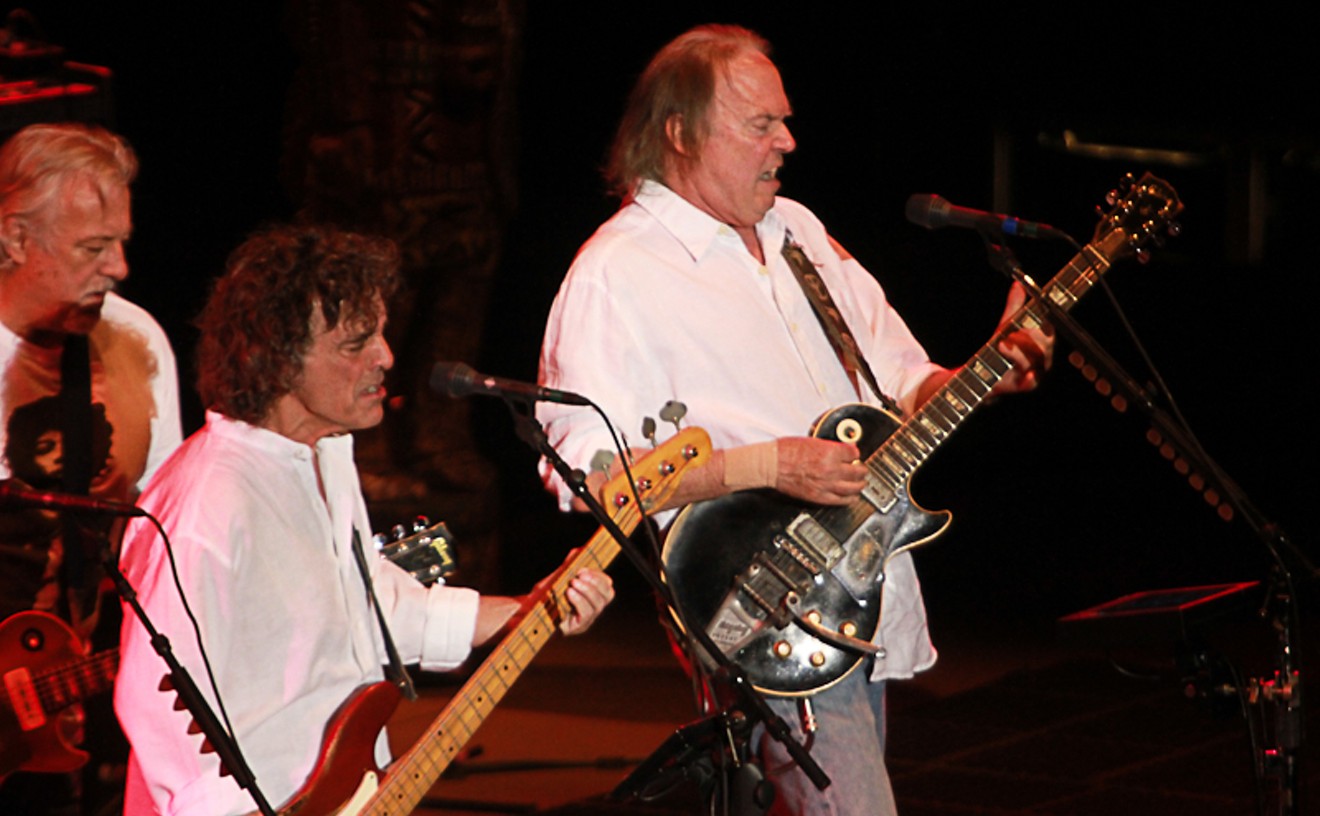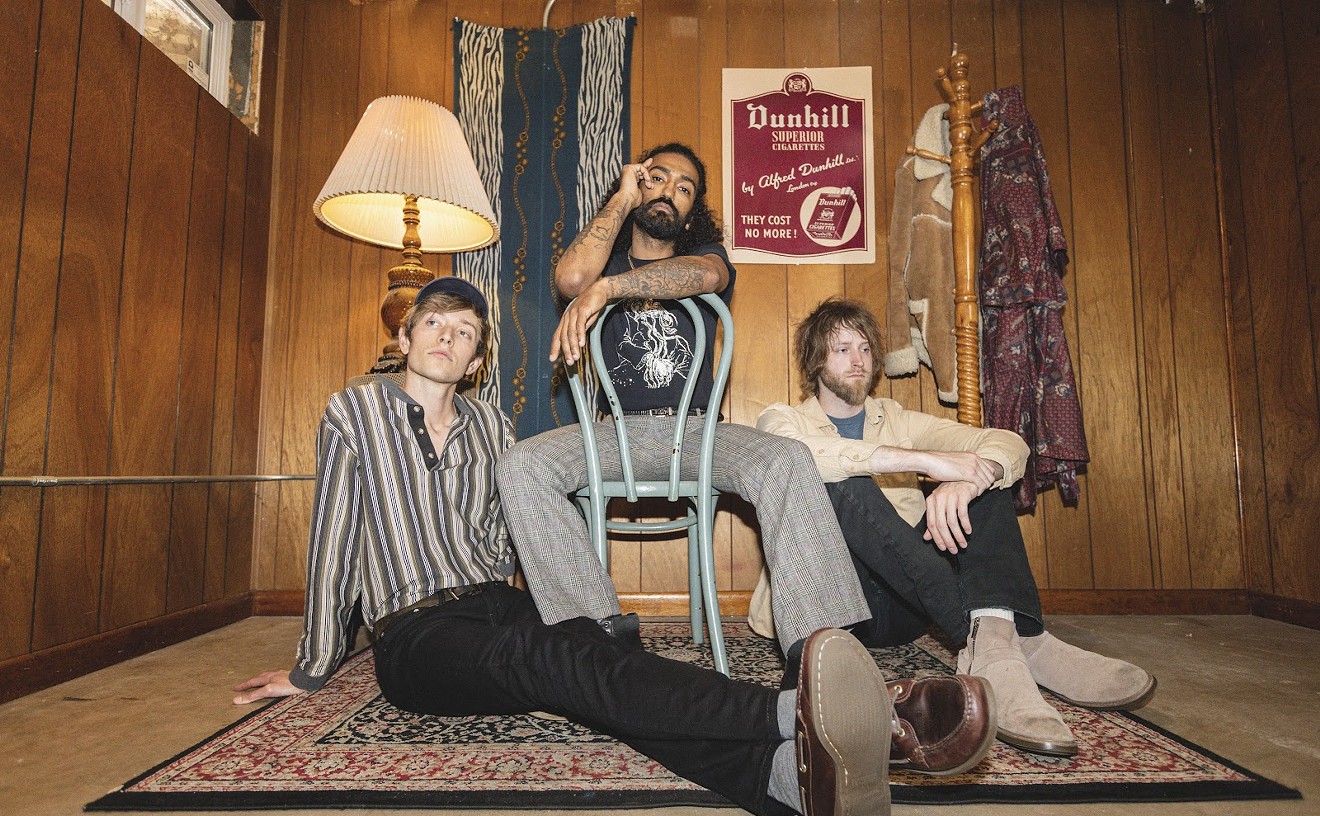The miles of washboard roads seemed to go on forever through the darkened forest. The drive felt like something out of The Blair Witch Project and took over an hour. There were few signs of living, breathing humans on that dirt road, but it ended at Colorado's legendary Gathering of Shadows, a black-metal festival that started back in 2004 and has been accused of allowing white-supremacist bands to take center stage.
The June 2017 event I was headed to was strictly invitation-only, to keep away cultural tourists. But if that hadn't kept them away, the two-hour drive from Denver, much of it on forest roads with mile markers covered in mud, probably would have — not to mention the subsequent hike on trails littered with fallen trees and little signage indicating that you're on the right path.
A friend who had been to the festival a decade ago advised that I drive down during daylight hours. But why deny myself the adventure of going alone in the dark to a strange place far from any cities and lacking phone reception? Especially when I was going to a festival that has been controversial from early on because it has given a stage to bands claiming to be National Socialist black metal.
The festival's 2017 iteration took place in the same year that black-metal legends Mayhem toured North America and Europe, performing 1994's De Mysteriis Dom Sathanas in its entirety. The album, a defining work of the genre, was the first record to include former Tormentor vocalist Attila Csihar, who had started Tormentor in communist Hungary. Before working with Mayhem, Csihar had heard appalling rumors about the band's members' vile behavior. But during the collaboration, he says, he found the musicians to be gentlemen — especially for people who were "pretty fucking far out.”
“In the beginning, it was very scary, and you could compare it today to horror movies,” Csihar says. “The level of expression was really extreme, and just a small group of people had the courage to not just listen to it, but play it. In Hungary, Norway, Poland, the U.S. and all around the world in the beginning, just the craziest and most fucked-up kids started playing this stuff. We influenced each other, of course, and it just kept growing. Of course what happened in Norway was just the spark that lit the whole bomb. “
The most famous stories of the genre outside of the music itself involve people in the black-metal scene burning some fifty churches between 1992 and 1996 in Norway; former Mayhem bass player and Burzum founder Varg Vikernes has been accused of inciting the torchings. Vikernes was also convicted of murdering Mayhem guitarist Øystein Aarseth, aka Euronymous, who in turn is said to have taken photos of the aftermath of the 1991 suicide of Mayhem vocalist Per Yngvie Ohlin, aka Dead. It's further rumored that Euronymous took parts of Dead's brain to make a stew and fragments of his skull to make necklaces. Apparently, the stew part wasn't true.
These lurid details of the misdeeds of a few musicians just supports the argument that black metal was probably the last form of music made that had the cache of the forbidden and whose dark, occult, pagan imagery is the antithesis of mainstream sensibilities and spirituality.
The church burnings were, after all, a militant rejection of Christianity's conquest of the native religions and holy sites of Scandinavia over which many of the churches were said to have been built. Satan is often held up as a symbol of rebellion against a hypocritical and weak culture. That combination of philosophy, neo-pagan spirituality and anti-establishment attitudes has produced a diverse international scene that has also come to include National Socialist black metal, a subset of black metal that most black-metal artists reject as incompatible with the subculture's disdain for blind allegiance to anything or anyone – political parties included
The organizers of Gathering of Shadows in the past welcomed black-metal bands regardless of political beliefs, as long as their music was deemed worthwhile; after all, festival attendees come from a broad spectrum of political and spiritual beliefs.
According to Ross Hagen’s 2011 book Metal Rules the Globe: Heavy Metal Music Around the World, Gathering of Shadows “emphasizes spirituality and wilderness in its advertising, but is organized by white supremacists, a fact I discovered when I attended the event in 2007.”
It's difficult to know what convinced Hagen of this “fact,” other than the possible inclusion of bands claiming to be NSBM on the bill and the organizers’ willingness to include those acts and their fans as long as they didn't carry out acts of violence at the festival. There are no public lists of past performers to verify whether those bands were included on subsequent lineups. By 2017, the original organizers had handed over the reins to a new crew, which did not respond to requests for comment about the accusations.
I thought about all of this as I drove past late-spring campers sitting around a fire heading to the 2017 event, titled “Reclamation of the Exiled.” This was the first edition of the festival since 2010's “Culmination of the Pleiades.” The new title is a reference to a fire that damaged the festival site, rendering it inaccessible and unsuitable for live music from 2011 through 2016.
When I arrived at the festival, I could hear the abrasive low end rumble of Demonic Christ. The setting was small, the stage in a clearing surrounded by trees, lit only by tiki torches. Demonic Christ, which has been around since 1992, looked the black-metal part, with the bass player sporting spiked bracers. Vocalist Dana Duffey made a pointed statement about dedicating a song to all the social-justice warriors that weren't at the show. That surely tongue-in-cheek remark was the only truly political statement I heard at the festival.
Otherwise, bands and fans talked about how the community had made a dedicated effort to be there for the music, setting aside ideology. Fans were not disengaged or passive, but mostly took in the music quietly — except when it seemed appropriate to vocalize appreciation not just for the music, but for this shared moment in the woods where we could all see authentic American black metal somewhere infinitely more special than a rock club.
Gathering of Shadows 2017 happened across two weekend nights and included fewer than a dozen bands. The lineup included Colorado's Weapönizer and Portland's Uada, which filled in for Nightbringer, also from Colorado, which couldn't perform because one of its members got stuck in Europe at the last minute.
As Uada performed, dressed like black-metal wizards conducting a prolonged ritual, both the set and the setting reminded me that in a world in which the Internet has erased most musical mysteries, where marketing and music culture all but hand special experiences to any eager consumer, there are still musical and artistic subcultures that create challenging immersive moments that no marketing campaign could manufacture and that fans have to strive to attend.
[
{
"name": "Air - MediumRectangle - Inline Content - Mobile Display Size",
"component": "12017618",
"insertPoint": "2",
"requiredCountToDisplay": "2"
},{
"name": "Editor Picks",
"component": "17242653",
"insertPoint": "4",
"requiredCountToDisplay": "1"
},{
"name": "Inline Links",
"component": "18838239",
"insertPoint": "8th",
"startingPoint": 8,
"requiredCountToDisplay": "7",
"maxInsertions": 25
},{
"name": "Air - MediumRectangle - Combo - Inline Content",
"component": "17261320",
"insertPoint": "8th",
"startingPoint": 8,
"requiredCountToDisplay": "7",
"maxInsertions": 25
},{
"name": "Inline Links",
"component": "18838239",
"insertPoint": "8th",
"startingPoint": 12,
"requiredCountToDisplay": "11",
"maxInsertions": 25
},{
"name": "Air - Leaderboard Tower - Combo - Inline Content",
"component": "17261321",
"insertPoint": "8th",
"startingPoint": 12,
"requiredCountToDisplay": "11",
"maxInsertions": 25
}
]

